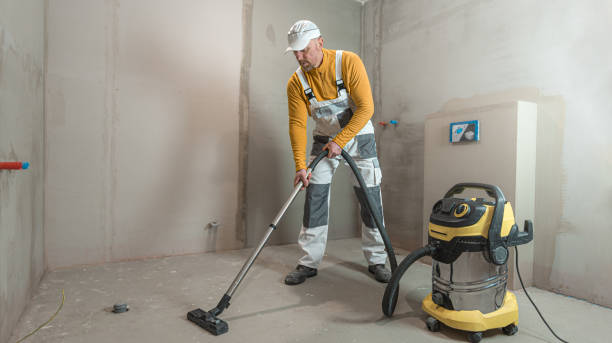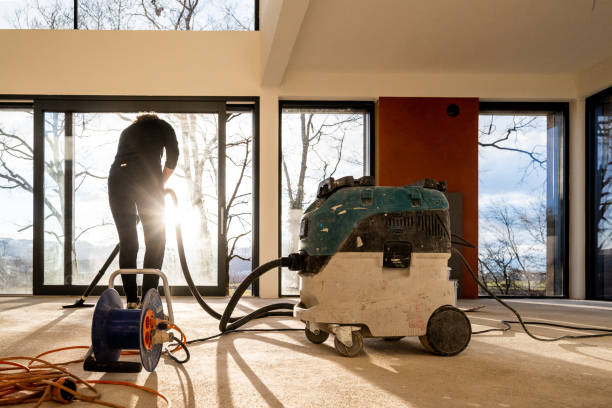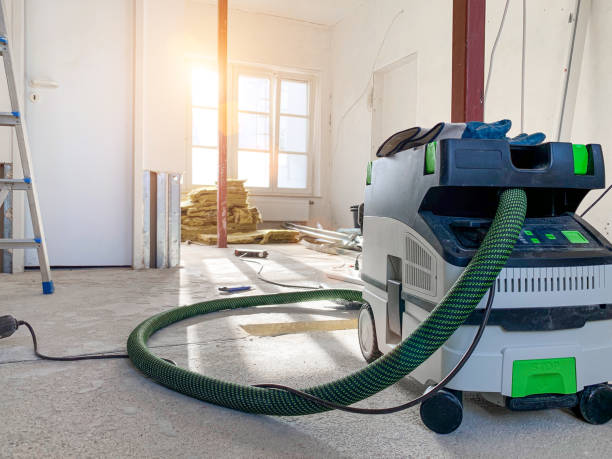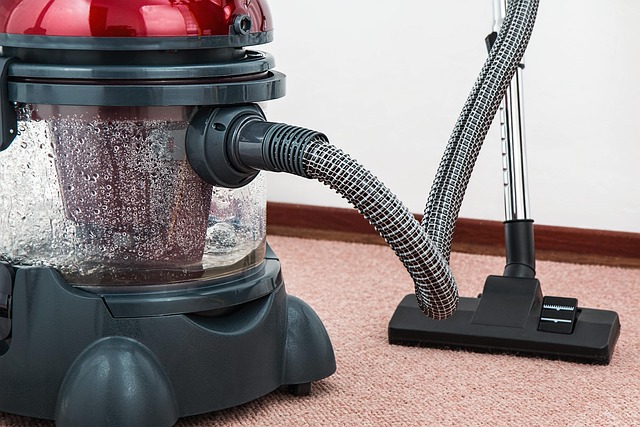Post-construction cleanup can be an overwhelming task, with layers of fine dust, debris, and leftover materials covering every surface. Unlike regular household cleaning, post-construction cleaning requires a powerful and efficient vacuum that can handle fine particles, heavy debris, and hazardous materials like drywall dust and sawdust.
With so many vacuum options on the market, choosing the right one can be challenging. In this comprehensive guide, we’ll explore 10 expert tips to help you select the best vacuum for post-construction cleanup. From suction power and filtration systems to tank capacity and durability, we’ll cover everything you need to know before making a purchase.
1. Prioritize Strong Suction Power
Post-construction debris can include everything from fine drywall dust to large wood chips and nails. A vacuum with high suction power (measured in CFM – Cubic Feet per Minute) is essential to effectively remove all debris types.

What to Look For:
- CFM rating of at least 150-200 for powerful suction.
- Water Lift (Sealed Suction) of 80 inches or more for handling heavy debris.
- Variable suction control to adjust settings for different surfaces.
Pro Tip: Look for a vacuum that has at least 6-10 horsepower (HP) for maximum efficiency in construction sites.
2. Choose the Right Filtration System
Post-construction dust is often fine and airborne, which can be hazardous if inhaled. A high-quality filtration system is crucial for maintaining air quality and preventing clogged filters.
Types of Filters to Consider:
- HEPA (High-Efficiency Particulate Air) Filters – Capture 99.97% of particles as small as 0.3 microns, making them ideal for drywall dust and allergens.
- Multi-Stage Filtration – Uses multiple filters to prevent clogging and maintain performance.
- Washable & Reusable Filters – Reduce maintenance costs and improve long-term efficiency.
Pro Tip: If you’re dealing with hazardous materials like asbestos or mold, always opt for a certified HEPA vacuum.
3. Consider the Tank Capacity
Post-construction cleanup generates a large amount of debris, so choosing a vacuum with a large tank capacity prevents frequent emptying and saves time.
Recommended Tank Sizes:
- 5-10 gallons – Suitable for smaller projects or residential cleanups.
- 10-20 gallons – Best for mid-size renovations or commercial sites.
- 20+ gallons – Ideal for large-scale construction sites with heavy debris.
Pro Tip: Opt for a stainless steel or heavy-duty plastic tank for durability and longevity.
4. Opt for a Durable and Sturdy Build
Post-construction vacuums must withstand rough handling, heavy debris, and prolonged use. A vacuum with a rugged and durable body will last longer in tough environments.

What to Look For:
- Stainless steel or reinforced plastic housing for impact resistance.
- Heavy-duty wheels and casters for mobility on uneven surfaces.
- Metal hose and wand construction for durability.
Pro Tip: Avoid lightweight household vacuums—they won’t hold up against construction debris.
5. Look for a Wet/Dry Vacuum for Versatility
Post-construction sites often have liquid spills, damp dust, and wet debris. A wet/dry vacuum is designed to handle both dry and wet messes efficiently.
Benefits of a Wet/Dry Vacuum:
✔ Can clean up water, paint spills, and wet debris.
✔ Equipped with a drain port for easy emptying.
✔ Reduces the need for multiple cleaning tools.
Pro Tip: Make sure the vacuum includes separate filters for wet and dry functions to prevent damage.
6. Check for Strong Hose and Attachments
A high-quality hose and a variety of attachments make post-construction cleanup more efficient.
Key Features to Look For:
- Hose Diameter: 2.5-inch hose for large debris; 1.25-1.5 inches for finer dust.
- Hose Length: A minimum of 8-12 feet for extended reach.
- Attachments Needed:
- Crevice tool for tight spaces.
- Brush nozzle for delicate surfaces.
- Floor brush for wide areas.
Pro Tip: Choose a vacuum with a locking hose to prevent disconnections while cleaning.
7. Prioritize Portability and Maneuverability
Post-construction sites can be large and require moving the vacuum across different areas. A vacuum that is lightweight, has sturdy wheels, and ergonomic handles will make the job easier.
Key Features for Portability:
✔ Large rear wheels for easy movement over rough surfaces.
✔ Swivel casters for effortless maneuvering.
✔ Compact design if working in tight spaces.
Pro Tip: For large sites, consider a backpack vacuum for maximum mobility.
8. Evaluate Noise Levels
Powerful vacuums can be loud, which can be disruptive in residential or indoor environments.
What to Look For:
- Noise levels below 75 dB for quieter operation.
- Vacuum models with sound insulation to minimize noise.
Pro Tip: Wear ear protection if working in loud environments for extended periods.
9. Check the Power Source and Cord Length
Choosing between a corded or cordless vacuum depends on your project size and mobility needs.

Corded vs. Cordless:
✔ Corded Vacuums – Provide continuous power but require a long cord (preferably 20-30 feet).
✔ Cordless Vacuums – Offer mobility but require high battery capacity (look for at least 60 minutes of runtime).
Pro Tip: A corded vacuum with a retractable cord keeps cleanup simple and prevents tripping hazards.
10. Compare Price and Warranty
A high-quality vacuum is an investment, so consider both price and warranty coverage when making a decision.
What to Keep in Mind:
✔ Budget-friendly options ($100-$250) for small projects.
✔ Mid-range models ($250-$500) for contractors and professionals.
✔ Premium vacuums ($500-$1000+) for industrial-grade performance.
Pro Tip: Choose a vacuum with at least a 2-5 year warranty for long-term reliability.
Final Thoughts
Choosing the best vacuum for post-construction cleanup requires careful consideration of suction power, filtration, tank capacity, durability, and portability. Whether you’re a contractor, a professional cleaner, or a homeowner tackling a renovation project, investing in the right vacuum will save you time, effort, and frustration.
By following these 10 expert tips, you can confidently select a high-performance vacuum that ensures a dust-free, debris-free, and spotless cleanup every time.
Now that you know what to look for, it’s time to pick the best vacuum and make your post-construction cleanup a breeze! 🚀
Would you like any additional recommendations on specific vacuum models? Let me know, and I’d be happy to help! 😊

